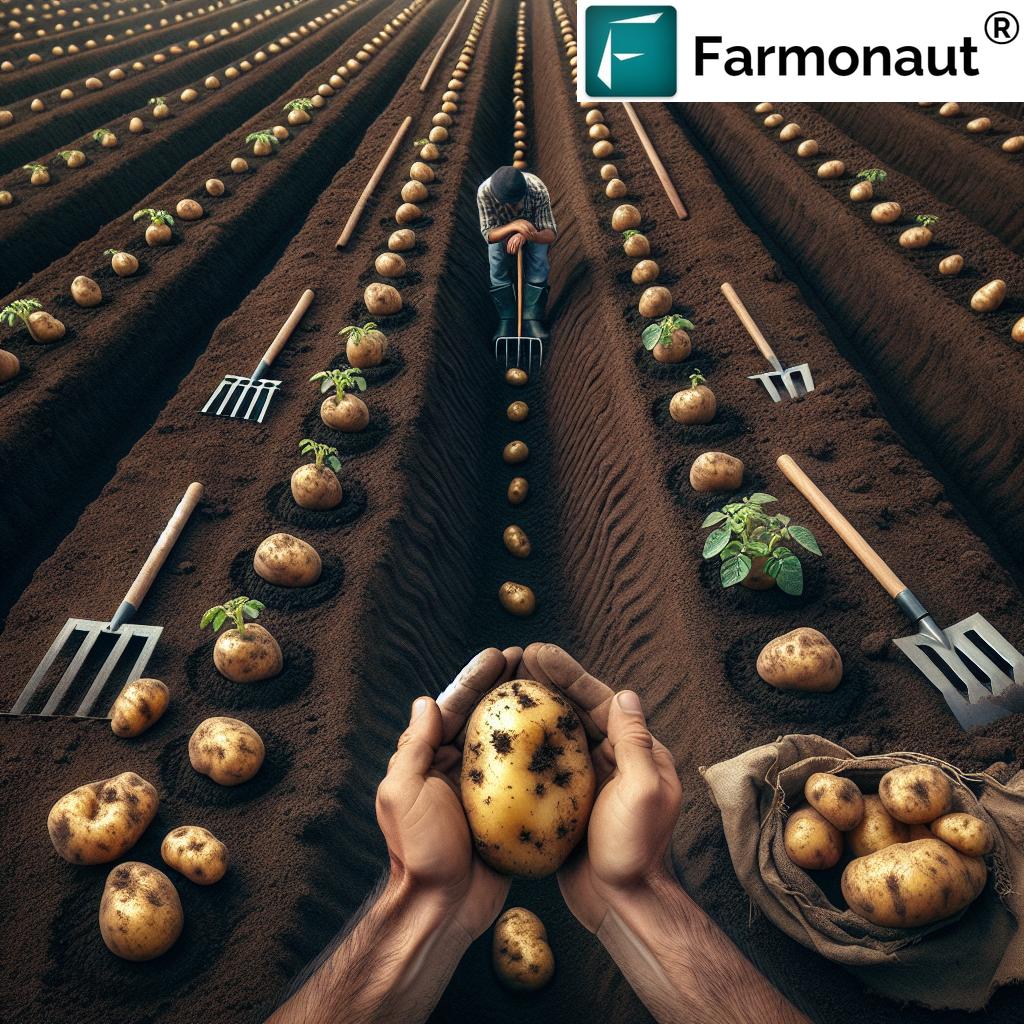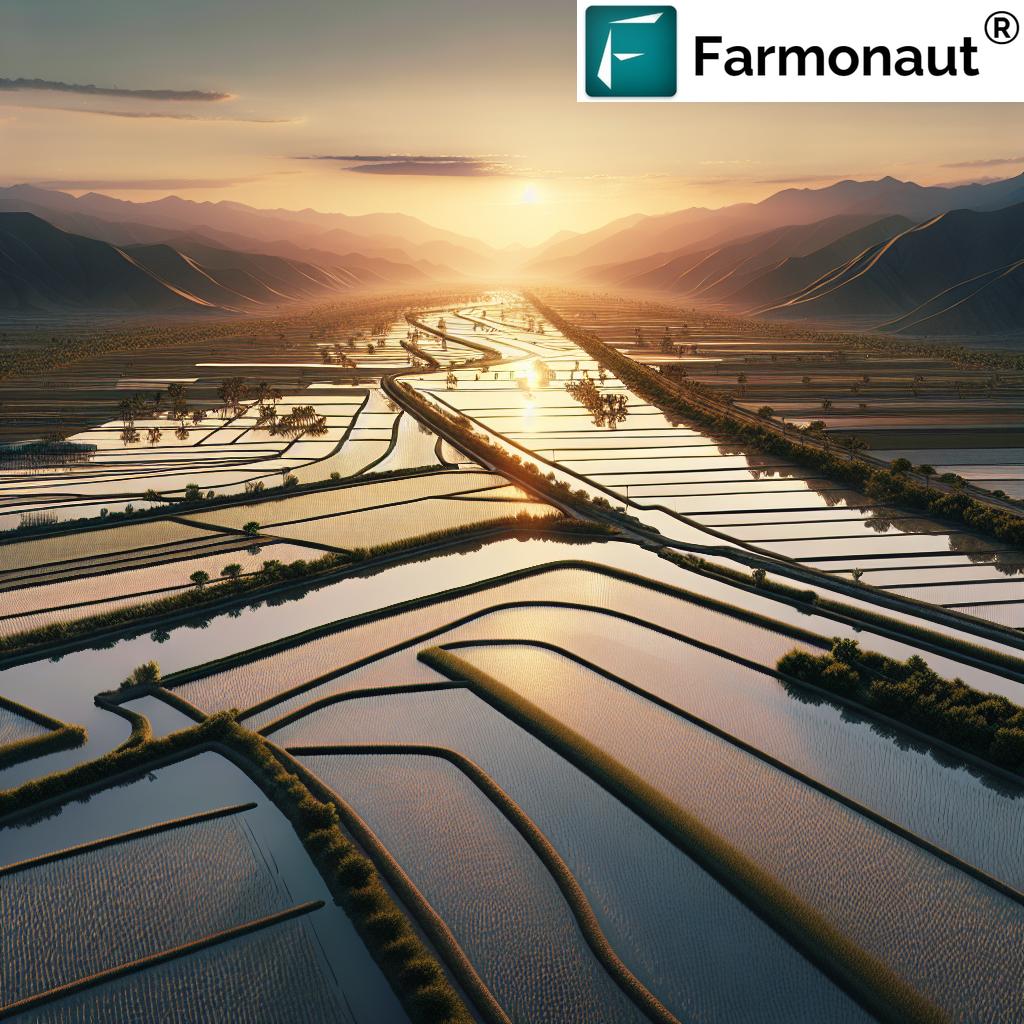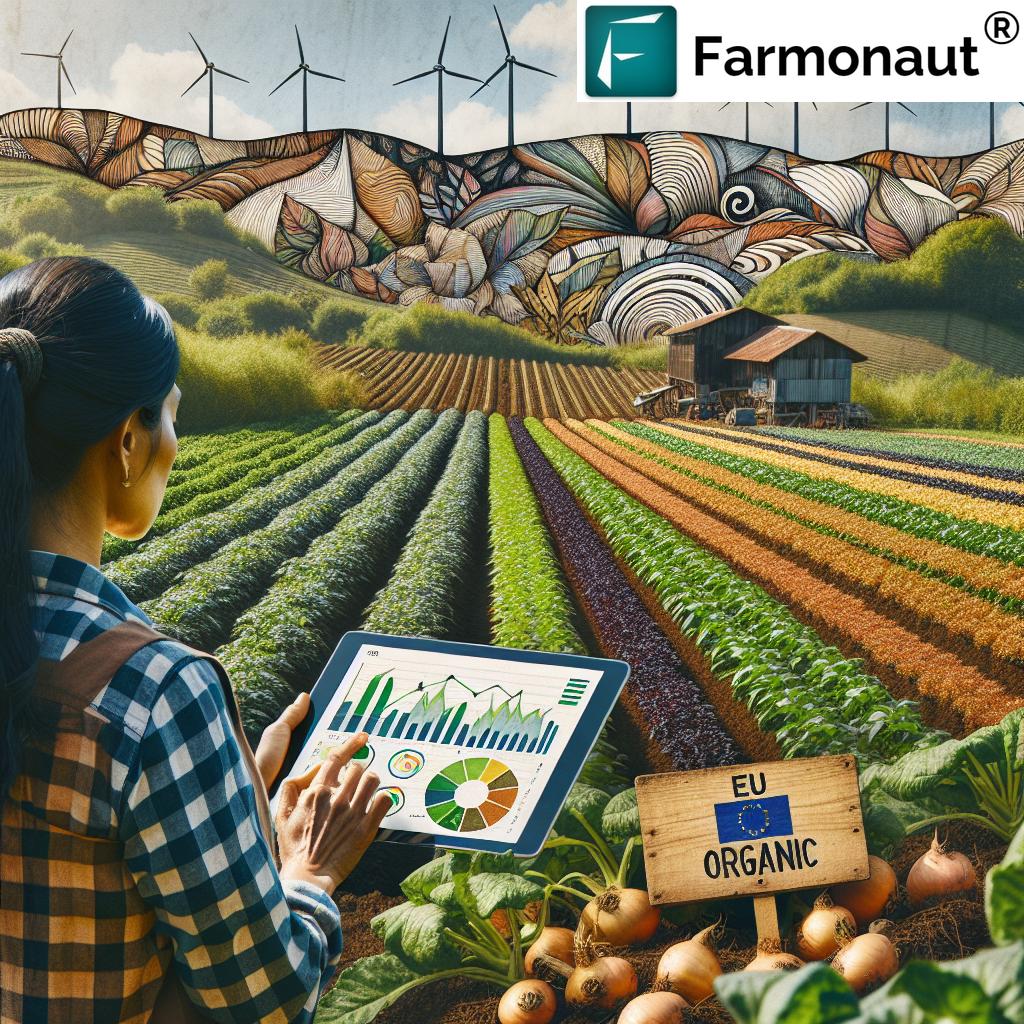German Farming Tools: Agriculture in German 2025
Table of Contents
- Introduction: The Changing Landscape of German Farming in 2025
- A Legacy of Precision: Agricultural Traditions in Germany
- Modern German Farming Tools & Machinery
- Advanced Technologies Transforming Agriculture in Germany
- Sustainability & Environmental Responsibility in the German Agricultural Sector
- Comparison Table of Top German Farming Tools 2025
- Satellite Technology & Smart Farm Management: The Farmonaut Approach
- Key Trends Shaping Farming in German 2025
- Critical Challenges & Future Outlook for German Farming
- FAQs: German Farming Tools & Agriculture in German 2025
- Conclusion: Blending Innovation & Tradition for Tomorrow’s Farms
“Over 70% of German farms will use precision seeding tools by 2025, boosting crop efficiency and resource management.”
Introduction: The Changing Landscape of German Farming in 2025
German farming in 2025 stands as a remarkable blend of innovation and tradition, setting an example for modern agriculture worldwide. The country is renowned for its rich agricultural traditions—from the fertile plains of Lower Saxony to the rolling hills of Bavaria. Yet, the sector is also leading the charge in the integration of technology, efficiency, and sustainability. As emissions reductions and environmental regulations become more crucial than ever, German farmers are demonstrating a successful model for balancing productivity with responsibility.
This article explores the current state of agriculture in German territories, focusing on tools, machinery, practices, and trends that define the sector today. We’ll look at precision methods, innovations in German farming tools, smart agricultural technologies, and leading-edge solutions like satellite-based monitoring—all shaping the future of German agriculture in 2025 and beyond.
“In 2025, Germany’s smart agriculture market is projected to reach €4.2 billion, driven by advanced machinery and data analytics.”
A Legacy of Precision: Agricultural Traditions in Germany
The identity of farming in German regions is deeply entwined with an enduring commitment to efficiency, quality, and environmental stewardship. For generations, local farmers have developed methods and techniques that reflect the country’s rich agricultural legacy. Approximately 270,000 farms operate across diverse landscapes, from
Lower Saxony and its fertile plains, to Bavaria’s legendary agricultural valleys.
- German farms produce a wide array of crops, including cereals, potatoes, vegetables, and fruits.
- Livestock farming—particularly cattle and pork—in Schleswig-Holstein, North Rhine-Westphalia, and other northern areas remains significant.
- The sector is characterized by careful resource management, soil conservation methods, and balanced use of fertilizers and pesticides.
This blend of tradition and modernity underpins why Germany continues to be a leader in both global agricultural output and in sustainability objectives.
Modern German Farming Tools & Machinery
Leading Manufacturers (CLAAS, Fendt, AGCO, and More)
German farming tools are globally renowned for their durability, innovation, and advanced engineering. Top manufacturers such as CLAAS, Fendt, and AGCO are pushing the boundaries of what farming equipment can achieve in 2025:
- CLAAS: Renowned for combines, forage harvesters, and tractors that employ precision seeding and AI-based guidance.
- Fendt: A market leader in smart tractors, automated tillage, and integrated telematics for farm machinery management.
- AGCO: Delivers solutions for precision planting, fertilizer application, and smart irrigation systems that optimize resource use.
By 2025, farming in German regions has seen widespread adoption of:
- GPS-guided tractors with variable rate technology (VRT), reducing input waste and maximizing efficiency.
- Automated harvesting machines that adjust settings in real time based on crop density and soil health.
- Robotic milking systems and drone surveillance for livestock and field health monitoring.
These innovations not only improve productivity but also delimit environmental impact by reducing resource waste, chemical usage, and emissions.
Advanced Technologies Transforming Agriculture in Germany
Precision Agriculture: From Sensors to Satellite Data
Precision agriculture is the hallmark of modern farming in Germany. Leveraging GPS, IoT, AI, satellite imagery, and drones, farmers:
- Monitor crop health in real time—identifying pest infestations and diseases earlier.
- Apply fertilizers and pesticides efficiently (variable-rate application systems), minimizing chemical runoff and protecting soil health.
- Optimize water use with smart irrigation and soil moisture sensors—critical in regions facing climate variability.
- Automate routine labor tasks with robotics and AI-driven machinery, reducing labor intensity and improving consistency.
Example: Automated Harvesting Machines & Robotics
In 2025, automated harvesting machines recognize crop ripeness, adjust for field variability, and reduce labor needs by up to 60%. German farming tools are on the leading edge of this revolution.
The rise of AI-based agri-advisory platforms has also transformed the sector, enabling farmers to interpret complex data and make better resource decisions, maximize yields, and react swiftly to climate and market changes.
– Manage expansive fields with satellite data, smart alerts, and custom analytics in one dashboard. Ideal for agri-businesses and cooperatives.
– Optimize machinery, logistics, and operations with satellite-backed tracking for higher efficiency and cost savings on farms.
AI, Blockchain & Traceability
Blockchain traceability is becoming essential to agriculture in German. As sustainability demands increase, ensuring supply chain authenticity and product origin is vital. Satellite-driven data, smart contracts, and real-time tracking are being rapidly adopted.
Discover more about the importance of supply chain traceability in sustainable farming with blockchain-based solutions for authentication and transparency.
Sustainability & Environmental Responsibility in the German Agricultural Sector
Sustainability is now an essential pillar of farming in German regions. As Germany’s agricultural sector strives to meet its ambitious goals—cutting emissions by 65% (from 1990 levels) by 2030—agricultural practices are increasingly focused on:
- Organic farming and reduced chemical input, preserving soil health and improving food safety.
- Crop rotation, diversification, cover cropping, and no-till/low-till farming to conserve soil and biodiversity.
- Deployment of renewable energy (e.g., solar-powered machinery, biogas generation from farm waste).
- Agroforestry initiatives—mixing trees, shrubs, and crops to boost carbon sequestration and enhance wildlife habitat.
- Smart water management and precision irrigation, especially in water-scarce areas.
The adoption of these practices is reducing agriculture’s environmental impact and setting a global standard for responsible farming.
– Track and lower your farm’s carbon impact with advanced satellite-based monitoring, tailored reporting, and actionable sustainability insights.
Comparison Table of Top German Farming Tools 2025
| Tool Name | Technology Category | Functionality / Innovation | Estimated Year of Adoption | Cost Range (€) | Environmental Impact |
|---|---|---|---|---|---|
| CLAAS LEXION 8900 | Precision Harvesting | AI-driven combine harvester; variable rate yield mapping | 2025 | €550,000–€670,000 | Fertilizer Reduction up to 12%; Fuel Savings 18% |
| Fendt Vario 1000 Series | Smart Tractor / Automation | Full GPS navigation, auto-steering, remote diagnostics | 2025 | €320,000–€410,000 | Water Saving up to 15%; Reduces Chemical Usage |
| AGCO Smart Seeder | Precision Seeding | IoT seeds placement; variable seed density | 2025 | €80,000–€120,000 | Seed Waste -28%; Fuel Savings 10% |
| Farmonaut Satellite Monitoring | Satellite Data / Resource Management | Real-time crop, soil & water health monitoring; NDVI & advisory | 2025 | €29–€250/month (subscription) | Fertilizer Reduction up to 20%; Water Saving up to 22% |
| Ropa Tiger 6S | Automated Root Crop Harvester | Self-driving sugar beet harvester; yield mapping | 2025 | €450,000–€590,000 | Reduces Soil Compaction; Improves Energy Use by 14% |
| Bosch Deepfield Connect | IoT / Sensory Network | Climate & soil sensor network for disease management | 2024–2025 | €950–€4,200/unit | Disease-Related Crop Loss -11%; Water Use -8% |
| John Deere See & Spray | AI Selective Spraying | AI detects weeds and targets spray precisely | 2025 | €125,000–€186,000 | Pesticide Reduction up to 67%; Soil Health Improved |
Satellite Technology & Smart Farm Management: The Farmonaut Approach
By harnessing satellite data, AI, and digital insights, the German agricultural sector is moving beyond machinery on the ground to a future where resource allocation is optimized from space.
We, at Farmonaut, are committed to making satellite-driven insights affordable and accessible globally—including to farmers in Germany, agri-businesses, and government planners.
- Real-time monitoring: Using multispectral imagery for vegetation health (NDVI), soil conditions, and infrastructure stability.
- AI-Driven Jeevn Advisory: Weather forecasts, custom strategies for higher yield and farm efficiency.
- Blockchain-based traceability: Enabling secure, transparent supply chains for food and agricultural exports.
- Resource and fleet management: Empowering businesses to track vehicles, machinery, and field operations remotely.
- Environmental impact monitoring: Supporting sustainable practices and emissions management at all scales.
Farmers and businesses can subscribe to Farmonaut’s satellite-based monitoring services for a comprehensive, cost-efficient solution. The service is available via web/app, API, and for crop loan and insurance verification.
Key Trends Shaping Farming in German 2025
1. Digitalization, Data & AI
- 80%+ of professional farms are using data analytics for yield optimization and crop protection.
- AI-based disease prediction reduces crop loss and optimizes pesticide use, contributing to healthier ecosystems.
- Digital field mapping and geotagging greatly improve traceability and smart resource planning.
2. Sustainability and Carbon Credits
- Climate-smart techniques and reduction of carbon footprint via regenerative agriculture, cover cropping, and agroforestry.
- Advanced monitoring for carbon footprinting and compliance with German and EU green policies.
3. Renewable Energy on Farms
- Solar, wind, and biogas installations are increasingly powering farm machinery, irrigation, and processing facilities.
- Energy efficiency helps reduce costs and emissions at every step of agricultural production.
4. Stringent Environmental Regulations
- Reduction of harmful chemical use and enforcement of biodiversity zones.
- Heavy investment in nature conservation and soil health preservation.
Critical Challenges & Future Outlook for German Farming
Key Challenges
- Climate change: Increased weather volatility and region-specific drought or flood risks threaten yields.
- Labor shortages: Agricultural labor is aging, necessitating automation and robotics adoption.
- Rising global competition: The sector must keep innovating to remain a global leader and assure exports.
- Resource constraints: Water scarcity, fertilizer price fluctuations, and land-use limitations.
The Outlook: Smart, Resilient & Sustainable
- Continued innovation in German farming tools: Automation, robotics, and satellite technology further transform farm management.
- Environmental responsibility drives every part of farming—from fertilizer application to biodiversity conservation.
- Younger generations are increasingly attracted by the digital and technological aspects of the sector.
- Renewable energy and circular bioeconomy projects will likely see Germany become even more of a noteworthy example worldwide.
FAQs: German Farming Tools & Agriculture in German 2025
What are the key tools used in German farming in 2025?
German farming tools in 2025 include AI-enabled tractors, drone surveillance systems, precision seeders, automated harvesters, IoT-based soil sensors, and satellite monitoring platforms like those provided by Farmonaut. These tools are critical for improving efficiency, reducing chemical use, and supporting sustainable practices.
How does technology impact crop yields and sustainability in German agriculture?
Technology allows farmers to monitor crops in real time, apply resources only where needed, and react to threats quickly. This results in higher yields, reduced chemical runoff, and improved soil health—delimiting the environmental impact and promoting sustainability.
Which German farm machinery manufacturers are considered leaders?
Companies like CLAAS, Fendt, AGCO, and Ropa are globally recognized for their durable, high-tech, and innovative tools. These leaders are constantly evolving their products to meet the demands of precision agriculture and environmental regulations.
What are the environmental goals for farming in Germany?
Germany aims to cut agricultural emissions by 65% by 2030 (from 1990 levels), protect biodiversity, and maintain soil health. These objectives are approached through a combination of advanced tools, sustainable practices, and stringent regulations.
How can technology companies like Farmonaut help German farmers?
Companies like Farmonaut empower farms with real-time data and insights via satellite imagery, AI, and blockchain technologies. These solutions support resource management, traceability, environmental monitoring, and smart advisory for sustainability and productivity. Farmonaut’s large-scale management tools and API services offer scalable value from family farms to large enterprises.
Are German farming tools accessible to smaller farms?
Yes. Beyond heavy machines, cloud-based and mobile tools (like Farmonaut’s subscriptions) allow even small and medium farms to use precision agriculture data and advisory services affordably.
What crops benefit most from precision farming in German regions?
Cereals, potatoes, vegetables, fruits, and root crops like sugar beets benefit immensely from precision seeding, smart irrigation, and AI-based disease monitoring.
How does Farmonaut ensure sustainable farming for the future?
We leverage satellite technology, AI, and blockchain to help users track environmental impact, implement resource-saving practices, navigate carbon-footprint regulations, and maintain transparency throughout the supply chain. Our tools are designed for scalability and long-term sustainability in the agricultural sector.
Conclusion: Blending Innovation & Tradition for Tomorrow’s Farms
German farming in 2025 demonstrates how traditions and technological innovation can coexist to shape a resilient agricultural future. Through the widespread use of German farming tools, adoption of advanced technologies, and a rigorous focus on sustainability and environmental health, Germany stands as a noteworthy example on the global stage. The integration of smart machinery, satellite-based monitoring, and data-driven agricultural practices ensures that the sector will continue to evolve dynamically, meet challenges, and set new benchmarks for farming worldwide.
As food demands rise and environmental concerns deepen, the lessons from farming in German regions—with their careful balance of innovation and tradition—are more essential than ever.















For the reason that the admin of this site is working, no uncertainty very quickly it will be renowned, due to its quality contents.